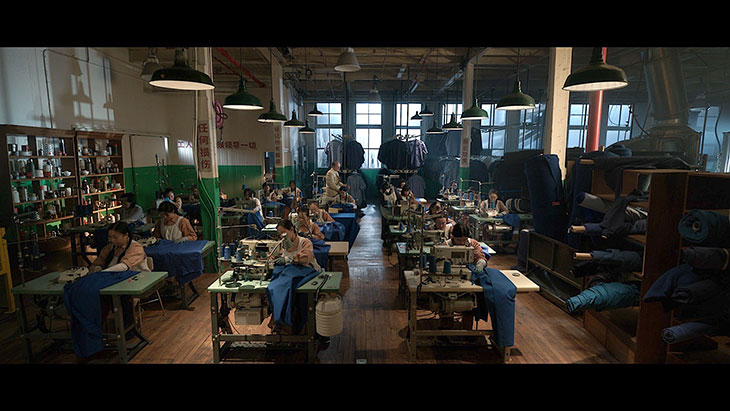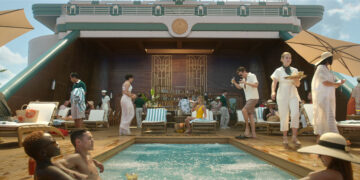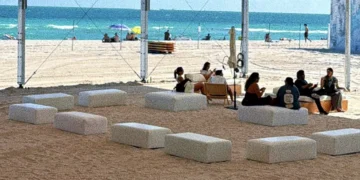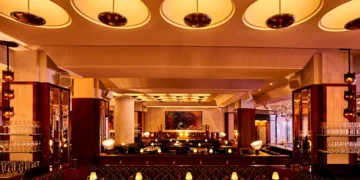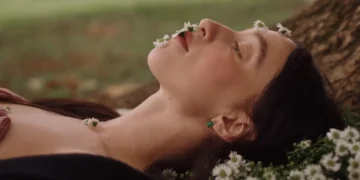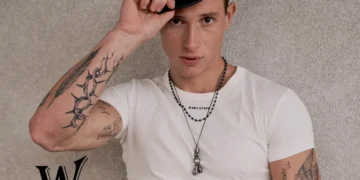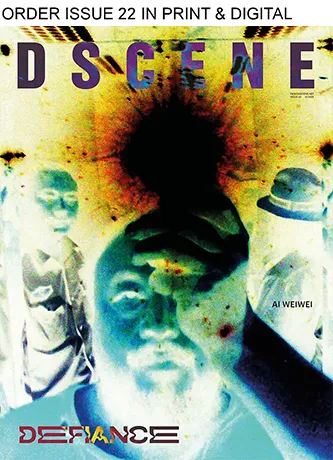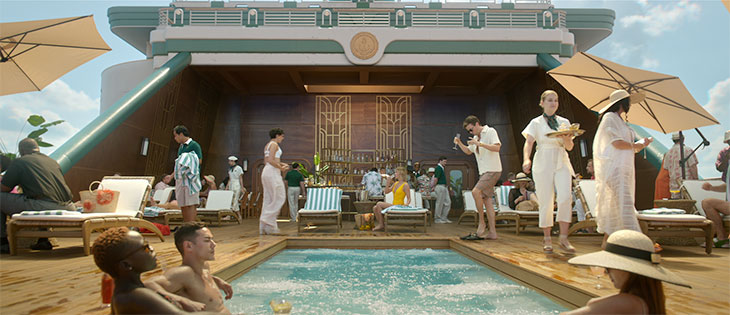
The journey to becoming a production designer often involves a winding path filled with unexpected turns and diverse experiences, and for James Philpott, it was no different. Initially exploring various creative fields without any clear direction towards the film industry, the world of production design was an uncharted territory for him. With a passion for the arts and an initial foray into the fashion industry, James soon found that his true potential could be better realized through the study of architecture. However, the road to a stable career in architecture was met with obstacles, particularly during a recession that made job opportunities scarce. It was during this challenging period that a suggestion to explore work in film and television art departments opened up new possibilities for James. With a background in fashion and architecture, and a keen artistic eye, he quickly adapted and excelled in the film industry. Starting from the ground up, James worked his way through various roles, gaining invaluable experience and honing his craft. The support he received from colleagues and mentors along the way was instrumental in this progression, leading to a successful career as a production designer.
INTERVIEWS
In an exclusive interview for DSCENE Magazine, our Editor, Pavle Banovic, dives into the creative process behind some of James Philpott’s most visually captivating projects, including the designed sets of “Death and Other Details.” James shares insights into the meticulous research and collaboration required to bring a 1930s art deco ocean liner to life on screen. From early career milestones to the challenges of working on large-scale productions, this talented production designer continues to push his craft, creating immersive worlds that captivate audiences and elevate storytelling.
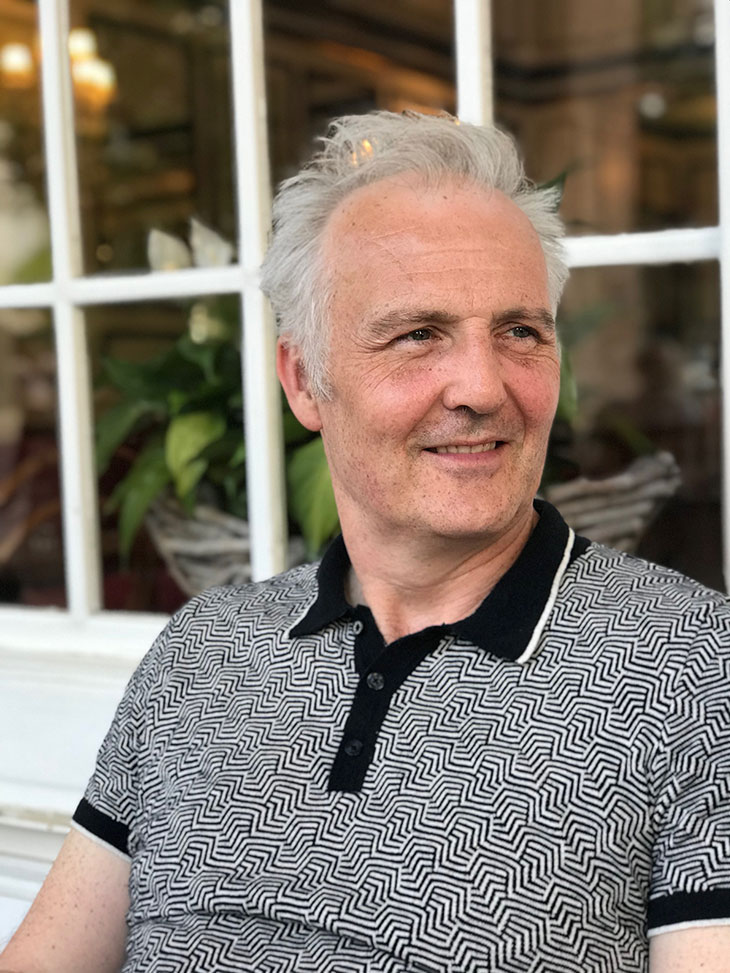
Can you tell us something about your background? How did you get into production design?
My journey to become a production designer was not a straight line. In fact when I started to explore creative fields I really did not know anything about working in film and even what a production designer was. I have always had artistic aspirations, and after a short stint in the fashion industry, I felt my talents might be better utilized by studying architecture.
Upon graduating from architecture school, a recession made finding architectural employment difficult. It was suggested working in a film or television art department would be a good option. I quickly found employment, and with my experience in fashion, architecture, and my artistic knowledge, I was able to adapt and excel in the film industry. Great opportunities came my way and I was able to work my way up to production designer. I would also like to acknowledge all the great support that I received along the way.
What does your creative process look like as a production designer?
With every show, I approach the project from two places and Death and Other Details was not an exception. The first place is to create a big artistic vision, which will inform every set. As the film is a collaborative process, the vision is created in collaboration with the showrunners, directors, and writers. During this collaboration, I learn the direction of the story and what is required to facilitate the functionality of the story in addition to the artistic vision. In the case of Death and Other Details incorporating the design details of 1930 art deco to create a wonderful lush world of an ocean liner. Details only work if there is a big-picture vision. I am able to read the scripts far in advance and have many conversations with our showrunners on how the story will evolve the sets and how they both can facilitate the story while incorporating the design details to create a fully realized world for our actors and audience. It is really important to me to create an immersive experience on a set for our actors. I want to feel that when an actor walks onto a set, they are entering the world of their character, and that, in turn, will help them become their character and give their most authentic performance. The other place is with the details. From big and small, my design process meets in the middle to create a fully realized world. For Death and Other Details, we were able to masterfully craft a very thoughtful design in line with opulent and sumptuous ocean liners that were in inspired by the story while incorporating involved intricate details, from cubism-influenced murals to period-accurate service rooms and even down to period jail cell doors.
As a designer on an episodic television show, I work on multiple sets at once and to do this I must collaborate with my incredibly talented art team, which consists of set designers, graphic artists, art directors, construction, paint and set decorator to work through all the intricate details.
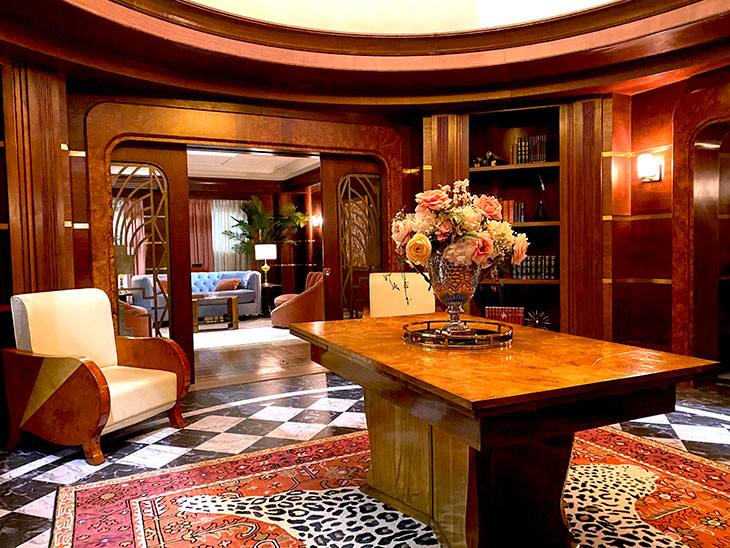
Of all the projects that you did, which one would you highlight as meaningful or transformative for you?
I think every project that one does contributes to your personal understanding and professional development. On my earlier project, Smallville, I was able to move up from art director to production designer midway through the series run. Here, I learned to manage a big show while bringing my creativity. But it was when I got the opportunity to do pilots I started to understand the full scope of what a production designer does. I was lucky to start with a fairly small procedural hospital pilot, where I learned about the overall vision that the designer needs to bring to a project to create the world that a show lives in. The show that I feel I really got put to the test and developed the concept of world-building on an epic scale was The 100. Here, I had to create a vision for a world that did not exist but make it so convincing that we felt it did.
With every show, I approach the project from two places and Death and Other Details was not an exception. The first place is to create a big artistic vision, which will inform every set. As the film is a collaborative process, the vision is created in collaboration with the showrunners, directors, and writers.
You were a Production designer on the ‘Death and Other Details’ show. Can you tell us more about how that came to be?
Yes, I was the Production designer for Death and Other Details. It had a bit of a mysterious start. One day just before Christmas, a few years back, I received an email from a producer who I had worked with on a pilot a few years before, Mark Martin. He runs a production company with director Marc Webb. The email asked if I might be available for a project, but no details beyond that. As I was just finishing a project this piqued my interest. Still not knowing what the actual project was, I received another email in late January. I was sent a script and a screener of the pilot that was shot in LA. I then learned that one of the showrunners was Heidi Cole Mc Adams, who was one of our writers from The 100. When I took the meeting, we all knew each other with the exception of Mike Weiss, the other showrunner. The meeting was so comfortable and exciting, with all sorts of ideas. The prospect of designing an Art Deco ocean liner is irresistible for a designer. Needless to say, I immediately signed on.
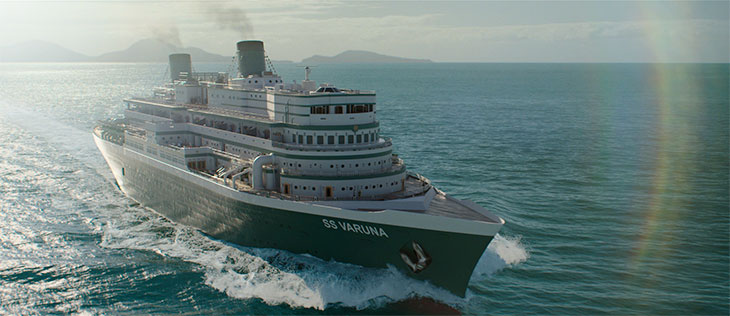
What were some of the main inspirations behind the set design of the show?
I spent my hours doing research into the gorgeous world of the 1930/40s ocean liners. It was very inspirational as these ships were floating palaces. Each ocean liner company would try to outdo each other by hiring the most creative and celebrated artists and designers of the time. As such, the design work I was looking at was the most creative, epic, and cutting-edge of its time. There are many, many photos of these beautiful ships. I collected and studied everything I could find. I even found an Instagram account solely dedicated to 1930s oceanliners, @oceanlinerstories, which I still look at as I am low-key obsessed with these ships and this account. The ships I drew the most inspiration from were the SS Normandie, which was a French ocean liner that started sailing in 1935, at the time, it was considered the most beautiful ship ever, and the SS Queen Mary, which is from 1936, and where Death and Other Details had the good fortune to use as a location on the pilot episode. Other ships I really loved and drew inspiration from were the L’Ile de France from 1926 and the SS L’Atlantique from 1931. The interesting part of the design aesthetic of these ships was the streamlined Art Deco that was used, which is a transitional style bridging traditional 19th-century style with modern elements that even today seem bold and fresh. The mix of elements, ranging from gorgeous rich wood paneling to highly bold, graphic flooring, streamlined, graphic brass detailing, and modernist cubist-inspired artwork, was exciting. I really wanted to bring this to the SS Varuna, our ship in Death and Other Details. Being aware the show is contemporary, I also had to ensure our choices still projected luxurious to a modern elite contemporary clientele. Fortunately, the lush velvets, sumptuous fabrics, and rich woods as well as the fresh design still do. I feel Art Deco still stands up as elegant and luxurious and, in some ways, is a hallmark of beautiful living.
Can you describe the overall visual concept for the “Death and Other Details” show?
Our showrunners wanted to make a classic Agatha Christie inspired locked room murder mystery but with a modern take. So, our principal location for this mystery had to embody this classic world, which became a character in its own right. Death and Other Details transports viewers to a restored 1930s ocean liner. The opulent world of the grand ocean liner reminiscent of Agatha Christie’s Murder on the Orient Express and Death on the Nile is combined with the world of the present-day elite.
The SS Queen Mary became one of my seminal reference points for the design as it was used in the pilot. Legally, the ship was not allowed to be replicated for the series. This was freeing as it opened a whole world of options for me. By this time I had delved into extensive research of this time period and these grand ships. I was truly inspired. These clear sensibilities were dazzling and set the tone for the basis of the rest of the season. Working with Set Decorator Alex Royek, Art Director Alyssa King, and Props Master Keej Mullen, we were able to masterfully craft a very thoughtful design in line with the opulent and sumptuous ocean liners that inspired the story. For the SS Varuna’s design, I sought a look that was realistic to the time period while still having the freedom to give it a contemporary feel. It was really about creating an epic scale as much as possible.
Details matter was the credo for the show. After hiding just enough from the audience to keep everyone on their toes, the details come together, and eventually, the truth is revealed. Our showrunners, Mike Weiss and Heidi Cole McAdams, shuffle the discovery of these details further by jumbling the chronology of the story itself and giving the audience different perspectives on the same event. Examining the idea that everyone’s truth is not the same and appearances are deceptive, audience perspectives on the stakes, the relationships, and the motivations behind the murder shift.
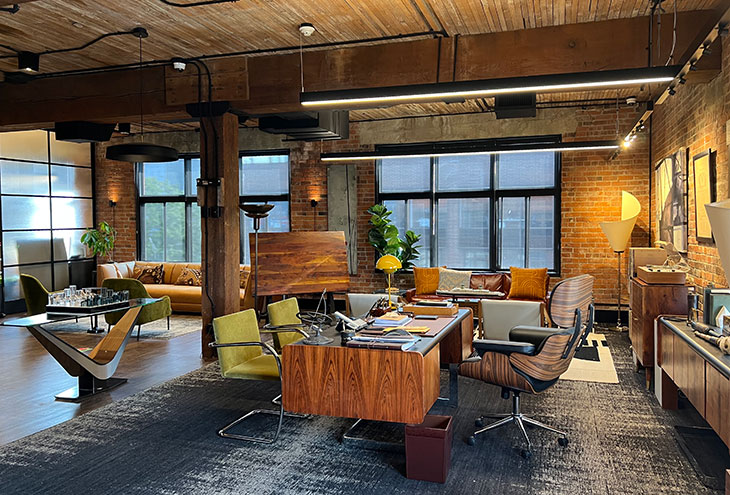
What were the biggest challenges you faced in designing the sets for this production?
Death and Other Details was a big undertaking and there were both many challenges and many rewards. Despite having a fairly generous budget and a decent amount of space, it still was a challenge to achieve the epic scale of a 1930s ocean liner. Space and money became a consideration fairly quickly as it always does. After a while, I had built sets into almost every inch of the stage including the mechanical rooms. We even had sets in the parking lot. We had to use every space we had. There was one stage that was a peculiar shape, 400’ long. 30’ wide and 52’ tall. Ultimately, we decided to put the dining room and bar, which was inspired by the SS Normandie’s dining room, which was over 90’ long and two stories tall, into this space. Also, in this space, we put the two-storey outer deck and promenade set. We had to build it so the floors of the set aligned with the floors of our stage building so we were able to cut holes into the stage walls to allow actors to come in and out of the set on camera. One of the other challenges is there are more limited resources in terms of locations, props and furniture for this period look. Though challenging, artistically, it is exciting as most of the sets need to be built, as do many pieces of furniture, which gives greater artistic control over the vision. Similarly both challenging and exciting is the volume of research required. One has to dig deep to fully understand the period, the aspirations, influences, and vision of the designers of the time. The 1930s was a really interesting time for design as there were so many influences that contrasted with each other. The traditional design of the late 19th century and early 20th century were making way for modern design. I have to say the research is actually one of my favorite parts as you learn so much, and it is so inspirational. Ultimately, in my role as the production designer of Death and Other Details, part of my job is to interpret all this information and relate it to the artistic vision of the show, its resources, and technical needs.
Inspiration is always something precious and needs to be cared for and recharged. For me, travel is what brings me inspiration. I love going to new places. I am a bit of a history buff, and when I travel, I like to research the place. The history is what makes it magical for me.
What would be a dream project for you?
I have had the good fortune to have done projects from so many different genres. For me a dream project is where one can dream. This is where I can create a full and complete world be it in science fiction or historical drama. I love set building and a show that I can build is always a dream.
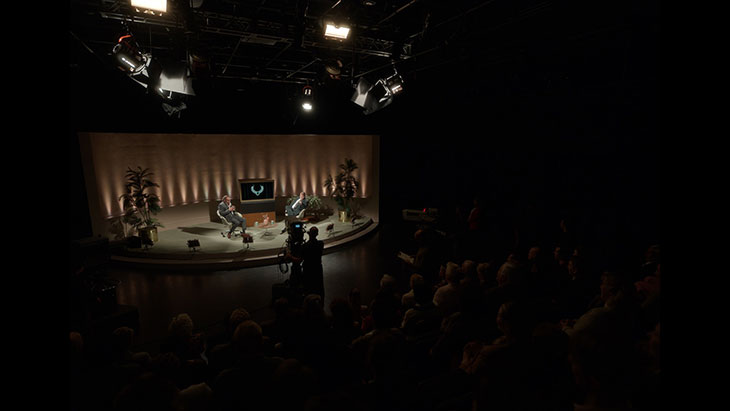
Do you have something that keeps inspiring you over the years – a place, person, or book?
Inspiration is always something precious and needs to be cared for and recharged. For me, travel is what brings me inspiration. I love going to new places. I am a bit of a history buff, and when I travel, I like to research the place. The history is what makes it magical for me. I particularly love going to places with long and interesting histories that are reflected in the architecture on the streets and in its museums. I always feel inspired when I return.
What is next for you? Is there something you are currently working on that you can share?
Right now, I just have another series called Sight Unseen, which is a very different type of project from Death and Other Details. I have had the good fortune to have been involved in a variety of very different projects with different themes and styles in the last few years. So, I am really open to all kinds of projects. As a designer, I feel we bring a talent and vision that can be applied to all genres. What is exciting is to figure out how to bring your best to everything you do. Moving forward, I am considering several opportunities that have come my way recently and there are more developing for the near future.
